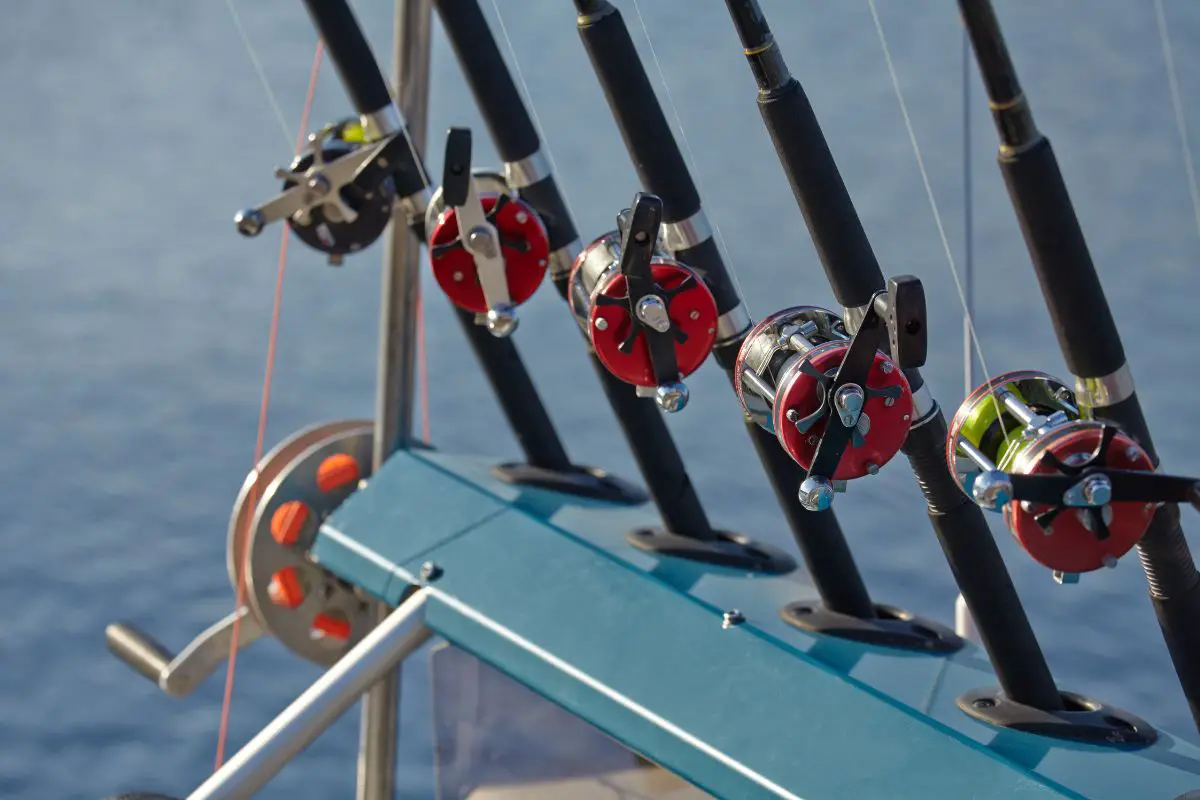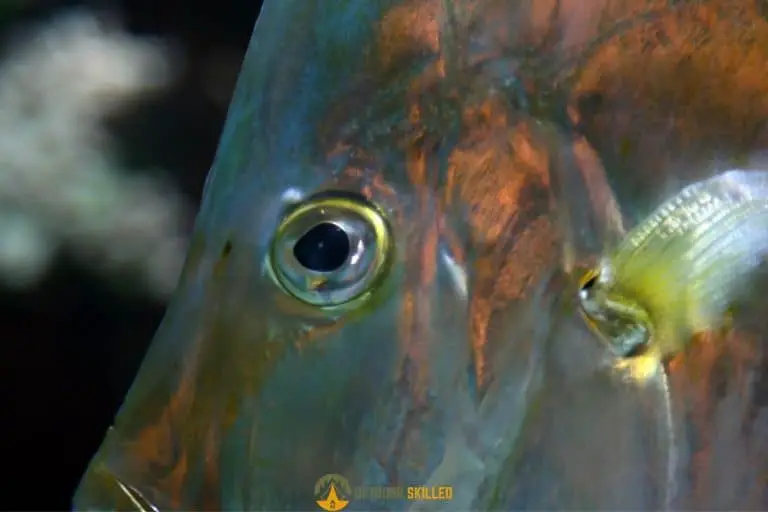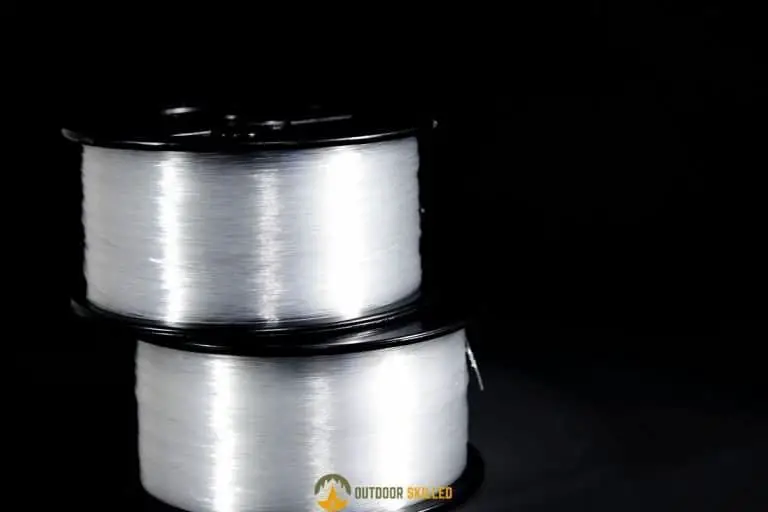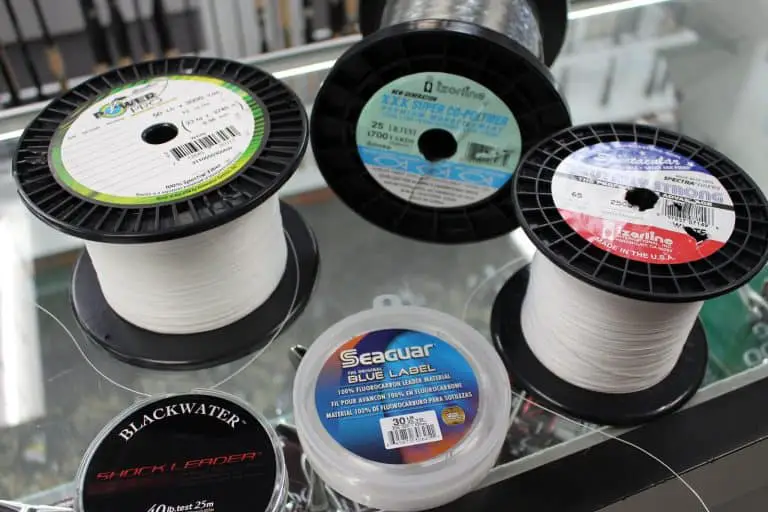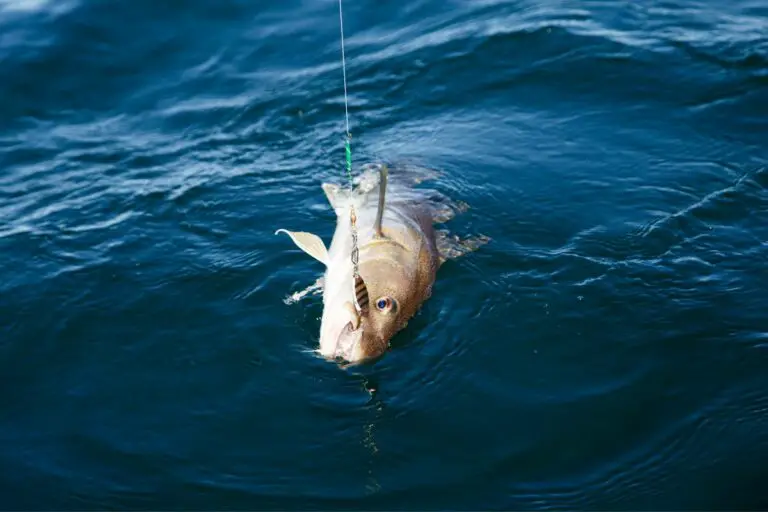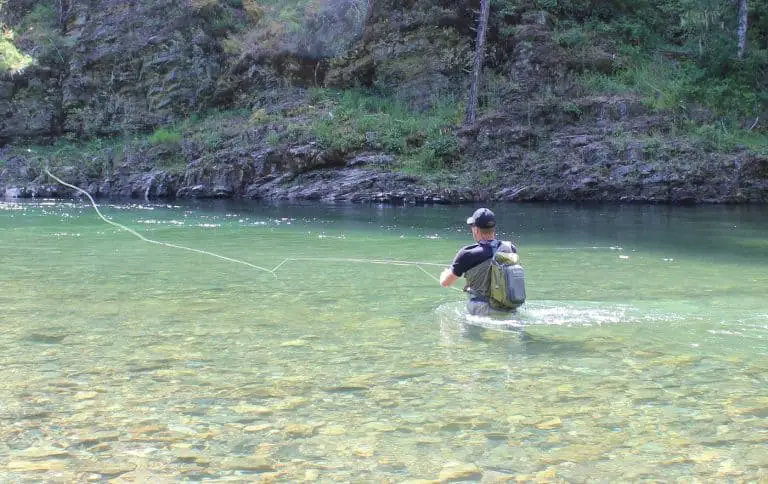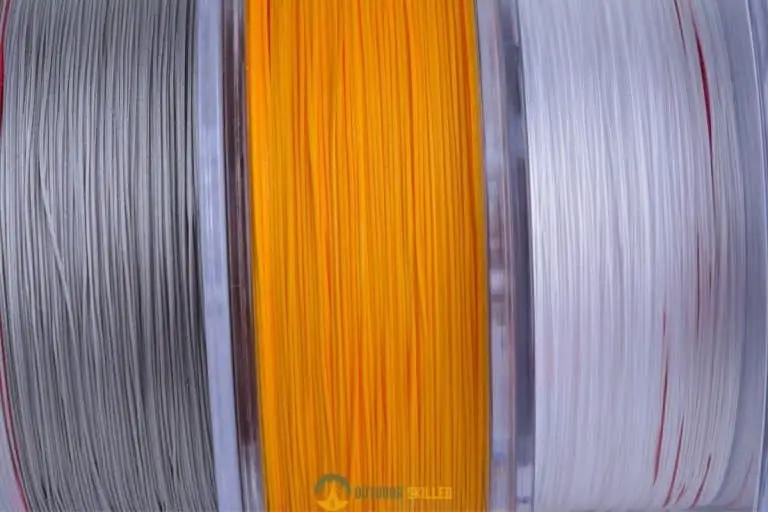Can A Fishing Line Withstand Heat? We Tested, Here Are The Results
Fishing lines are prone to develop high memory, which negatively impacts their performance in the water. Some anglers think that heating fishing lines will help decrease their memory.
So, can a fishing line withstand heat? A fishing line cannot withstand heat and will melt when exposed to extremely high temperatures. The degree to which a fishing line can withstand heat will depend on the type of line. Even without heat, fishing lines can break down over time and need to be changed yearly.
Continue reading to learn more about different fishing line types, how much they can withstand heat, and how much they last.
Table of Contents
Can a Fishing Line Withstand heat?

Fishing lines are not designed to withstand heat.
Some anglers think that heating the fishing lines will decrease their memory, which is the way a fishing line retains its form when wrapped around a fish spool.
However, exposing the fishing line to extremely high temperatures by boiling them or putting them in the oven will cause it to burn. Instead, it’s better to soak the fishing line in warm water for a bit to reduce the memory without damaging the line.
The degree to which a fishing line can withstand head varies depending on the line, as some lines can withstand high temperates more than others. So, let’s take a close look at the main types of fishing lines.
The Main Types of Fishing Lines
Braided
Braided lines are made of polyester as a base material and dacron. They get their strengths from the use of all fibers in the line, which means if one of these fibers has been damaged, the line strength and performance will be affected.
The up-dated braid lines are known as super lines, and they are made of Dyneema, gel-spun polythene.
These lines have a high resistance to high temperature and sunlight, and they don’t absorb water. However, their Abrasion resistance is limited, so once they rub against a sharp figure under the water, they will get damaged.
You need to replace the braid lines every 2 to 3 years if they don’t get damaged for any reason.
Fluorocarbon
Fluorocarbon lines are single filament lines made of plastic combined with fluorine and carbon.
This material will give you some advantages while fishing as these lines can withstand heat and sunlight, and they also don’t absorb water.
However, they are not capable of stretching, which leads to necking if this fishing line carries a heavy load. Even if you release the load, the line won’t return to its original shape.
You need to replace the Fluorocarbon lines every 1 to 2 years if they don’t get damaged for any reason.
Monofilament
Monofilament lines are nylon-based single filament lines.
These lines are one of the weakest fishing lines as they are damaged easily by heat, sunlight, or even saltwater.
They can be stretched with heavy loads, but they will return to their original shape after releasing the load, unlike Fliorcarbon lines. However, the salt may affect the line’s strength if you are fishing in saltwater.
You need to replace the Monofilament lines every year if they don’t get damaged for any reason.
Hybrid Lines
The hybrid line has no specific materials because it is a mixture of multiple synthetic materials.
These lines are more resistant to heat than other line types. They can, however, melt quickly when directly ignited. Depending on the substance used, each of these lines has a distinct melting point and burning point.
This fish line has no specific changing time, but you can check the guideline in the spool.
Can Boiling Your Fishing Line Cause It to Melt?
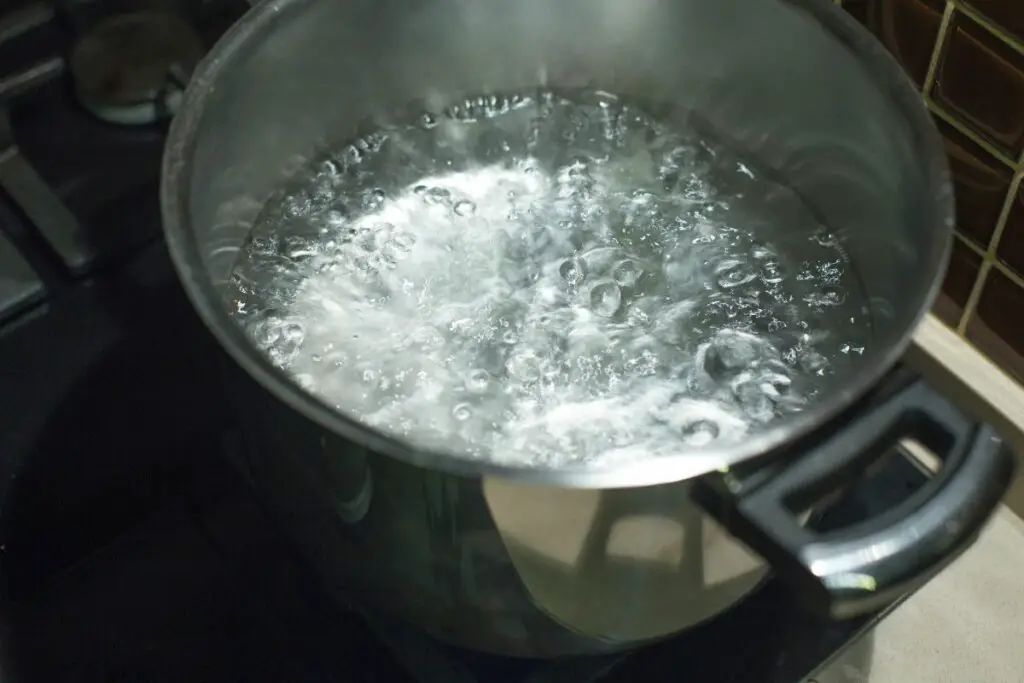
Boiling your fishing line can cause it to melt. The speed at which the line melts depends on the type of line, as monofilament lines are the least resistant to heat, so they will melt faster than other types of lines when boiled.
You may be wondering why some anglers might want to boil their fishing lines? The answer simply is that it’s common for anglers to soak the fishing line in boiled water to decrease the line memory.
While this way could be effective for some anglers, there are many who damage their lines by boiling them in water.
The trick is to know the suitable boiling temperature for the water that will help decrease line memory without melting the line. To be on the safe side, it’s better to soak the line in warm water from the tap instead of boiling.
Can You Put Your Fishing Line in the Oven?
You can not put the fishing line in the oven for any reason because it contains many synthetic materials that have a high ability to melt or even burn in some cases. In this situation, you will end up damaging the fishing line and oven too.
Some people also use fishing lines to tie up their food while it’s in the oven, which is very dangerous for your health as some of the toxic material from the melted fishing line might get into the food.
What Is the Correct Way to Reduce Fishing Line Memory?

If your fishing line develops curls and this will reduce the casting distance and increase the chance for snarls. All these signs mean you need to condition your line.
While the traditional way with warm water can cause damage, melting, and burning, you can condition and reduce your line correctly using a fishing line conditioner.
Our top recommendation for a line conditioner is this Line & Lure Conditioner. It works well on all types of fishing lines, especially braid lines.

It will help make your cast smoother and reduce the line memory. It’s also easy to apply and will not leave any oily residue on the fishing line.
How Long Do Fishing Lines Last?
Fishing lines can last an average of 2 to 3 years while being used. They will last even longer if they’re not used, which is known as the average shelf life. Learn more about whether your fishing line is still good here.
It mainly depends on the type of lines, as different lines have different properties. It also depends on external factors like heat, sunlight, the kind of water you’re fishing, load weight, and how much you use the line.
Here’s the average shelf life of different types of fishing lines:
- Monofilament: 1-2 years
- Fluorocarbon: 7-10 years
- Braided: over 10 years
Conclusion
There are main types of fishing lines which are Fluorocarbon, Monofilament, Braided, and Hybrid. Each type has its own advantages and disadvantages.
One of the common characteristics is that all of them will melt or burn when exposed to high temperatures, like boiling them in water or putting them in the oven.
The best way to reduce your fishing line memory and improve its performance is to use a fishing line conditioner instead of boiling it in water.
Related Questions
Do Fishing Lines Degrade in the Sun?
Some fishing lines degrade in the sun. It mainly depends on the type of line and how much resistance it has to UV light. Monofilament is the least resistant to UV light, so it will degrade the most in the sun. However, Braid and Fluorocarbon are the most resistant to UV light and won’t degrade.
Does Heat Affect Monofilament Lines?
Heat does affect Monofilament lines as they’re the least resistant to heat compared to other types. Monofilament fishing lines can handle temperatures of up to 105 degrees Fahrenheit. If the temperature rises, the plastic in the line will melt, changing the line’s characteristics and performance.
Does Heat Help or Hurt Line Memory?
Light heat can help line memory, and many anglers tend to soak their lines in warm water to reduce the line memory. However, high heat is going to degrade your fishing line’s performance and quality because most fishing lines will melt when exposed to high heat.
What Type of Fishing Line Has the Least Memory?
The type of fishing line that has the least memory is the braided line because it doesn’t stretch. Even after a long time on the reel in sunlight, this type of line will never spiral off the spool. It’s also the least prone to curls and tangles.
Are Braid Lines Stronger Than Monofilament Lines?
Braid lines are stronger than Monofilament lines. That is because Braid lines are made of several strands of fiber woven together, while Monofilament lines are made using one continuous strand. Braid also has a small diameter with high breaking strength, which means that they can carry a lot more weight.
Helpful Resources
Different Types of Fishing Line Explained
These Are The Fishing Lines I Absolutely Love
- After Testing endless brands and varieties, these are the best Fluorocarbon lines, these are the best Braided lines, and these are the best monofilament fishing lines.
- These are the best Ice Fishing Lines for your money
- These are the fly fishing lines that have never let me down.
- Targeting Trout? These are the best fishing lines for trout. For Bass, use these bass fishing lines.
- Not sure which fishing line to use? Check out these comparisons:
- Going Crappie Fishing? These Crappie Fishing Lines outperform everything else (and their price!)
If you like this article, please share it or pin it, you can find the share buttons below. We will really appreciate it ❤️

